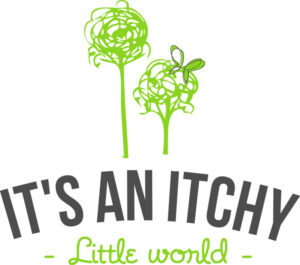Can a Nightshades Allergy Trigger Eczema?

Nightshade allergies are becoming increasingly common, but can it trigger an eczema flare up?
Discover what Jennifer Fugo, MS, CNS, and founder of Skinterrupt has to say about this connection in our video below. Scroll down to read the full transcript.
(begin transcript)
Today, I want to talk to you about eczema and nightshades. A lot of people worry that something in their diet is triggering their eczema. Nightshades are one of those groups where we start to question, could it be a nightshades allergy?
Let’s look into what nightshades are first and then we’ll focus on whether they could be a problem and what you can do about it.
Nightshades include:
- Tomatoes
- Tomatillos
- Chili peppers
- Bell peppers
- Eggplant
- White potatoes
- Gogi berries
- Huckleberries
- Chili powders
- Cayenne pepper
- Paprika
- Red pepper flakes
- Tobacco
- Ashwaganda
- Sorrel
- Gooseberries
- Belladonna
- As well as spice blends of these nightshades
There are three reasons why nightshades might be considered a problem: Nightshades contain 3 phytochemicals.
These include:
- Salicylates
- Histamines
- Glycoalkaloids (most notably Solanine)
Salicylates have to do with your liver’s ability to process salicylates, it’s not an actual gut issue.
Histamines found in food can actually increase the amount of histamines in your system or can release histamines into your system once broken down.
For those two reasons, they are more likely the main culprits as to why nightshades might be a trigger.
It could also be possible that you have a food allergy, which is important to rule out.
However, there’s one odd ball of the group – white potatoes. There’s a really interesting detail about potatoes that makes it possible to include it in your diet.
All you have to do is remove the peel which removes both salicylates and glycoalkaloids. It also reduces the solanine burden by 23 to 50 times. However, removing the peel would not reduce the histamine load, so it’s important to keep that in mind if histamines are an issue.
If you’d like to test out seeing if you’re suffering from a nightshades allergy, I would suggest eliminating them from your diet entirely for three weeks.
ILW Recommends: Have Success with Our Eczema Elimination Diet
But before you dive into that, take pictures of your skin in good lighting, so you can be a bit more objective to notice if there is a change. Also, write down and track your symptoms as well as their intensity before, during, and after your trial is done.
Then, once you go to reintroduce them, even if you saw no improvement whatsoever, I would suggest add one in at a time. That way you could determine if there is a particular reaction to just one food out of the group rather than the entire group itself.
FROM: Allergies, Contributors, Eczema, Food Allergies

Another problem with nightshades are the lectins in the seeds. Lectins are proteins that are intentionally toxic to keep animals and humans from eating them, so the seeds can eventually germinate and preserve the species. You can avoid their toxicity by removing them before eating. Eggplant seeds are especially toxic, with tomatoes next in line. I don’t know if they can cause eczema, however, but they do weaken your immune system.